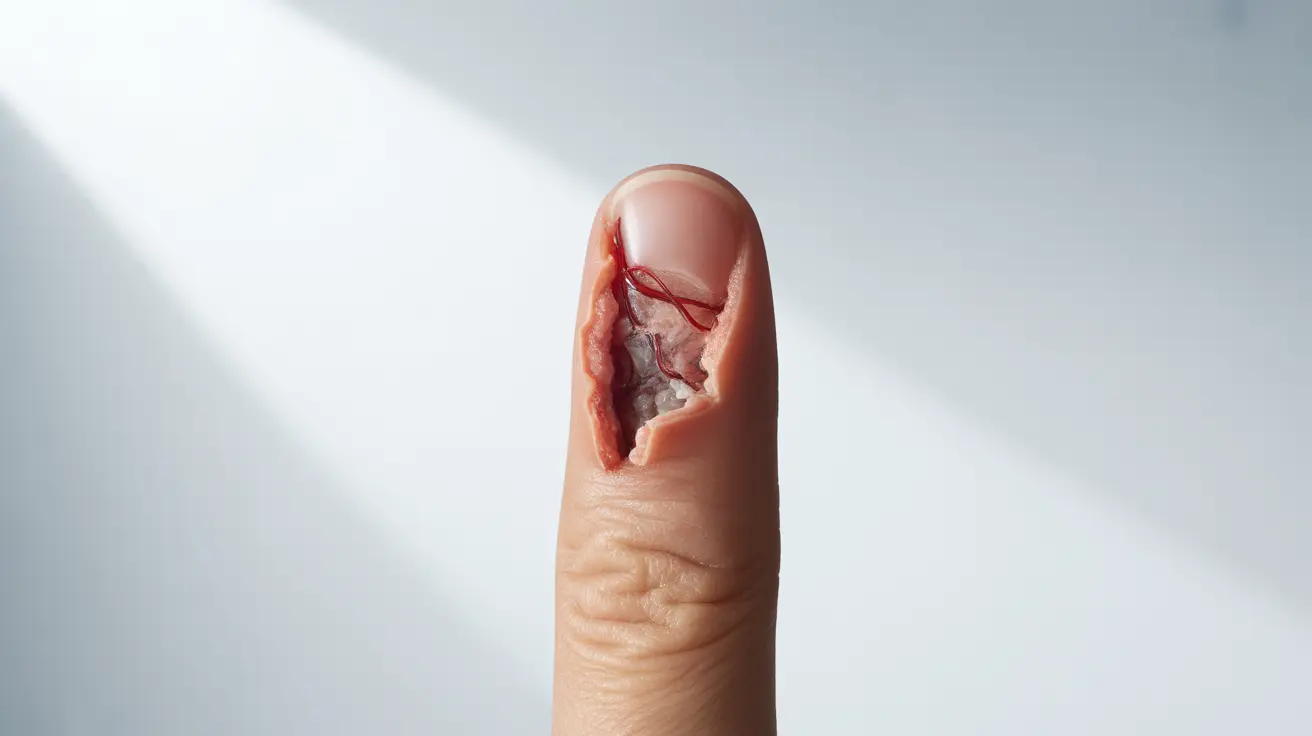A smashed finger is a common injury that can occur at home, work, or during activities, causing immediate pain, swelling, and often purple discoloration. Understanding how to properly assess and treat this injury is crucial for preventing complications and ensuring proper healing.
While many smashed finger injuries can be treated at home, knowing when to seek medical attention is essential. This comprehensive guide will help you understand the symptoms, treatment options, and warning signs that indicate the need for professional care.
Understanding Smashed Finger Injuries
A smashed finger occurs when significant force or pressure is applied to the digit, typically from crushing, slamming, or impact. The injury can affect various structures within the finger, including:
- Soft tissue and skin
- Blood vessels
- Nail bed
- Bones and joints
- Tendons and ligaments
Initial Signs and Assessment
When a finger is smashed, several immediate symptoms typically appear:
- Intense pain at the injury site
- Rapid swelling
- Purple or bluish discoloration
- Possible nail damage or bleeding underneath
- Limited range of motion
- Tenderness to touch
Immediate Treatment Steps
Taking prompt action after a smashed finger injury can help reduce swelling and manage pain effectively:
Cold Therapy and Elevation
Apply ice wrapped in a thin towel to the injured finger for 15-20 minutes at a time, several times per day. Keep the hand elevated above heart level to minimize swelling and reduce blood flow to the injured area.
Pain Management
Over-the-counter pain medications can help manage discomfort:
- Ibuprofen (reduces both pain and inflammation)
- Acetaminophen (helps with pain relief)
- Topical pain relievers for minor injuries
Managing Swelling and Purple Discoloration
The characteristic purple coloring occurs due to bleeding beneath the skin or nail. To address these symptoms:
- Continue ice therapy for the first 24-48 hours
- Wrap the finger gently with an elastic bandage
- Remove rings immediately before swelling increases
- Monitor color changes and circulation
- Keep the finger mobile but avoid strenuous activity
When to Seek Medical Care
Certain symptoms require immediate medical attention:
- Severe pain that doesn't improve with home treatment
- Obvious deformity or bone exposure
- Complete nail detachment or severe nail bed injury
- Signs of infection (increased warmth, redness, pus)
- Numbness or tingling that persists
- Inability to bend or straighten the finger
Frequently Asked Questions
What are the symptoms of a smashed finger, and how can I tell if it's severe?
Symptoms include immediate pain, swelling, and purple discoloration. The injury is likely severe if you notice extreme pain, deformity, complete nail detachment, or persistent numbness. Inability to move the finger or signs of bone involvement also indicate severity.
How do you treat swelling and purple discoloration from a smashed finger at home?
Apply ice wrapped in a towel for 15-20 minutes several times daily, keep the finger elevated, and take over-the-counter pain medication. Gentle compression with an elastic bandage can help reduce swelling. Remove any rings immediately to prevent circulation problems.
When should I seek medical attention for a smashed finger, especially if I see bleeding under the nail?
Seek medical care if there's significant blood under the nail causing pressure, severe pain, obvious deformity, or signs of infection. Also get help if numbness persists or you can't move the finger normally.
What are the best ways to manage pain and prevent infection in a smashed finger with an open wound?
Clean any open wounds with mild soap and water, apply antibiotic ointment, and keep the injury covered with a sterile bandage. Change dressings daily and monitor for signs of infection. Take over-the-counter pain relievers as needed.
Can a smashed finger heal on its own, or does it always require professional medical care?
Many smashed finger injuries can heal on their own with proper home care. However, severe injuries involving bone damage, significant nail bed trauma, or signs of infection require professional medical attention. When in doubt, have a healthcare provider evaluate the injury.




